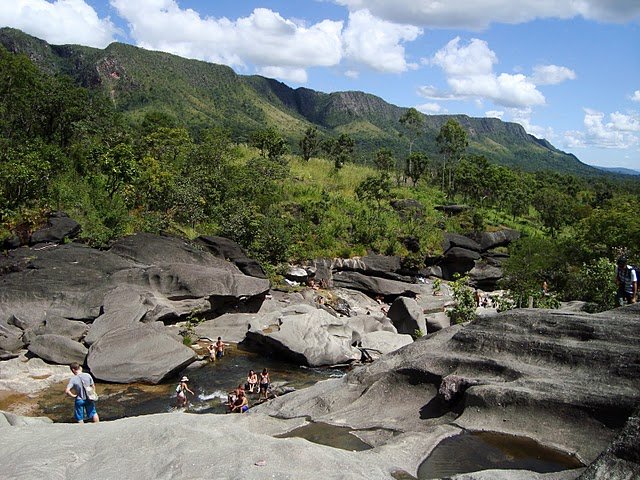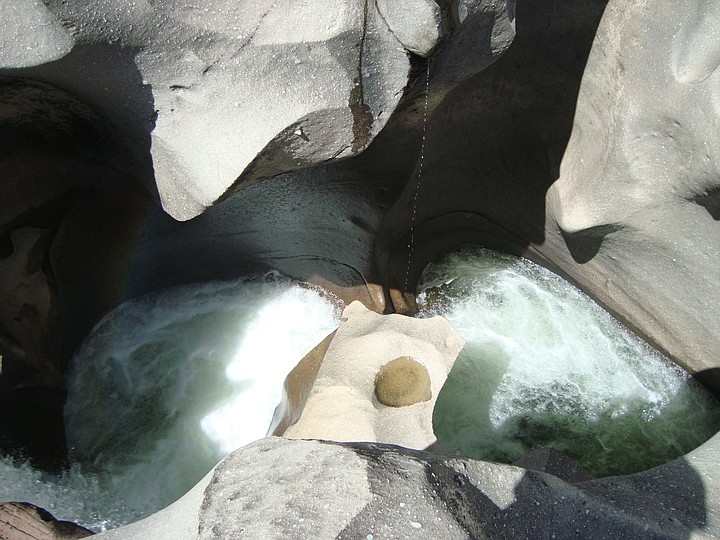 Facebook
Facebook
 X
X
 Instagram
Instagram
 TikTok
TikTok
 Youtube
Youtube

When I was a young San Diego grom, long weekenders meant the following: My dad piled me, my brothers and some friends into our VW van and we camped and surfed in San Clemente.
Despite my immense nostalgia for the California coast, there’s something wonderful about road-tripping when living abroad. During Holy Week, we drove 220 kilometers outside of the city of Brasília to Alto Paraíso, a small, rural enclave in Chapada dos Veadeiros, a UNESCO World Natural Heritage Site in the high plateaus of the Brazilian tropical savanna.
The national park is a highland paradise with a hi-def sky. Along with toucans, macaws and hundreds of other animals, the region attracts Brazilian visitors and a small progressive international community of therapists, architects and proponents of communal living. And because it has the largest crystal mine in the world, it also attracts UFO enthusiasts.
I didn't get to see a UFO (*tear), but we did get to see several toucans eating avocados (imagine that in Fallbrook!) and blue hyacinth macaws clamoring over palm nuts.

The Chapadas are characterized by horizontal striations of rock — basins within the plateau. As a geological noob, this means one thing to me: waterfalls. And lots of them.
During our three-day visit, we hiked to three waterfalls and the Vale da Lua (Valley of the Moon). The latter (pictured) is an otherworldly basin with rocks that seem to swirl and tangle around a crystalline river. A short hop-about on the river basin, and gravity feels wrong.
According to UNESCO, Chapada dos Veadeiros is one of the world’s most ancient and ecologically diverse regions, including “60% of all floral species and almost 80% of all vertebrate species.”
We lodged at Spazenda, a fazenda (farm) transformed into a modernist architectural dreamscape in a land before time. The owners are a Dutch family. Mom (Janet) is an architect, Dad (Xavier) is a designer/builder. Our lodging was the former farmhouse of an old fazendeiro (farmer). The house was "in proportion" to the original, but designed with elegant wood sinks, a dyed concrete floor, local art and a dining table made from the ubiquitous roxo tree.
All water on the premises (from the faucets to the small bathing pool) derives from fresh mineral water springs (tested and treated annually). I have no way to tell whether the water, earth, et al., was magical, but it was celestially refreshing. After a couple of days I felt delightfully untethered from city life.
Perhaps San Onofre, California, was less prehistoric and exotic, but the desire is the same: retreat. Spend less, travel slow, be with loved ones.
I'm not sure you have to go to Dharamshala and see the highest lama to be the greatest traveler. People with an attitude of expectation can feel the magic in a slow staycation. In the end, everywhere is illuminated.


When I was a young San Diego grom, long weekenders meant the following: My dad piled me, my brothers and some friends into our VW van and we camped and surfed in San Clemente.
Despite my immense nostalgia for the California coast, there’s something wonderful about road-tripping when living abroad. During Holy Week, we drove 220 kilometers outside of the city of Brasília to Alto Paraíso, a small, rural enclave in Chapada dos Veadeiros, a UNESCO World Natural Heritage Site in the high plateaus of the Brazilian tropical savanna.
The national park is a highland paradise with a hi-def sky. Along with toucans, macaws and hundreds of other animals, the region attracts Brazilian visitors and a small progressive international community of therapists, architects and proponents of communal living. And because it has the largest crystal mine in the world, it also attracts UFO enthusiasts.
I didn't get to see a UFO (*tear), but we did get to see several toucans eating avocados (imagine that in Fallbrook!) and blue hyacinth macaws clamoring over palm nuts.

The Chapadas are characterized by horizontal striations of rock — basins within the plateau. As a geological noob, this means one thing to me: waterfalls. And lots of them.
During our three-day visit, we hiked to three waterfalls and the Vale da Lua (Valley of the Moon). The latter (pictured) is an otherworldly basin with rocks that seem to swirl and tangle around a crystalline river. A short hop-about on the river basin, and gravity feels wrong.
According to UNESCO, Chapada dos Veadeiros is one of the world’s most ancient and ecologically diverse regions, including “60% of all floral species and almost 80% of all vertebrate species.”
We lodged at Spazenda, a fazenda (farm) transformed into a modernist architectural dreamscape in a land before time. The owners are a Dutch family. Mom (Janet) is an architect, Dad (Xavier) is a designer/builder. Our lodging was the former farmhouse of an old fazendeiro (farmer). The house was "in proportion" to the original, but designed with elegant wood sinks, a dyed concrete floor, local art and a dining table made from the ubiquitous roxo tree.
All water on the premises (from the faucets to the small bathing pool) derives from fresh mineral water springs (tested and treated annually). I have no way to tell whether the water, earth, et al., was magical, but it was celestially refreshing. After a couple of days I felt delightfully untethered from city life.
Perhaps San Onofre, California, was less prehistoric and exotic, but the desire is the same: retreat. Spend less, travel slow, be with loved ones.
I'm not sure you have to go to Dharamshala and see the highest lama to be the greatest traveler. People with an attitude of expectation can feel the magic in a slow staycation. In the end, everywhere is illuminated.
Comments